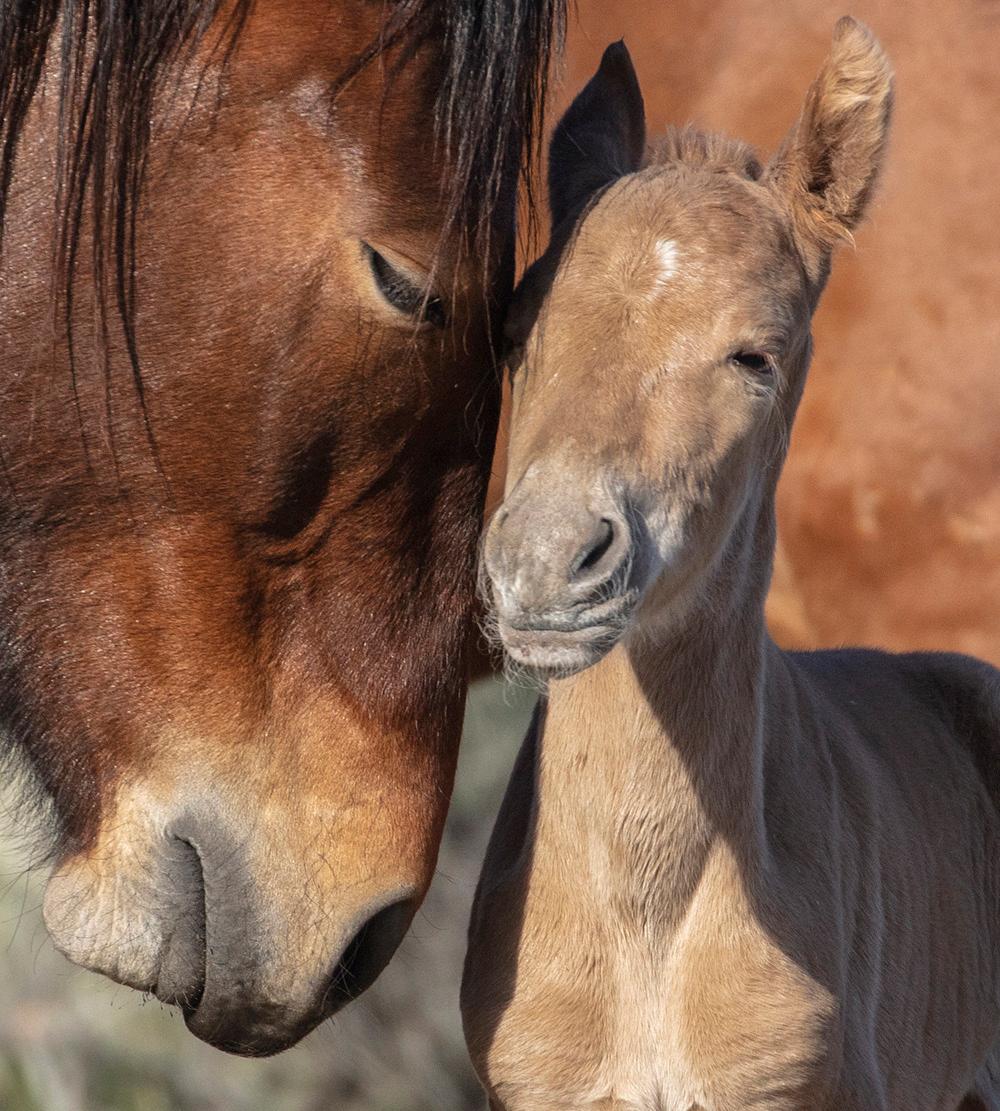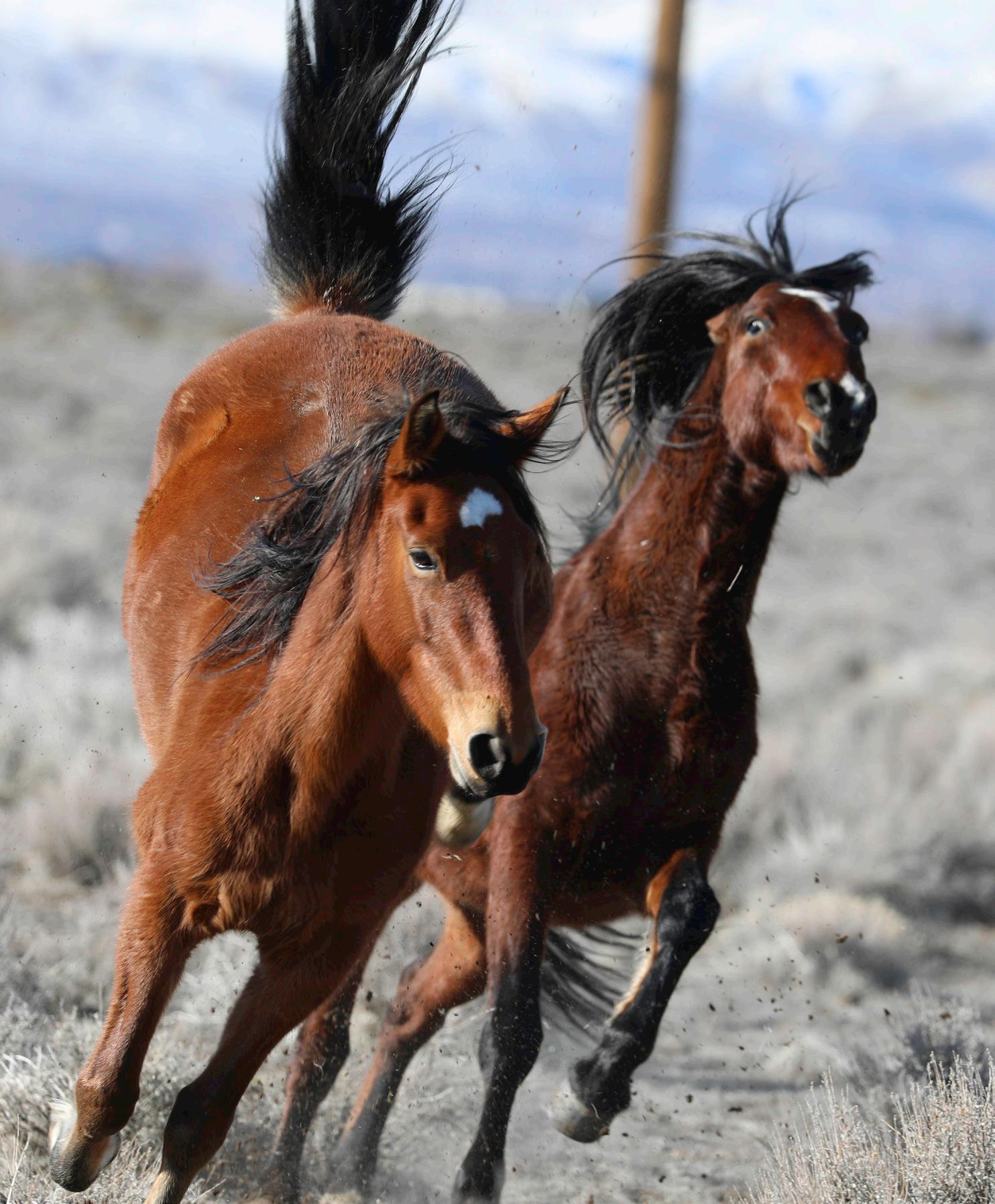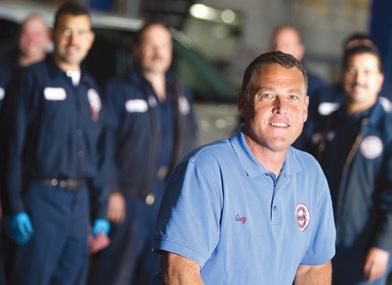
4 minute read
Extinction of a historic herd
from March 2023
BLM traps three generations of a famous Carson Valley mustang band
Federal agents lured 18 wild horses into traps in the Carson Valley during the first two months of this year, sparking outrage among wild-horse advocates who have documented generations of that free-roaming historic herd and regularly treated the mares with a birth-control drug.
Advertisement
“The Bureau of Land Management took away three generations in one trailer, which is just killing us,” said Mary Cioffi, president of the Pine Nut Wild Horse Advocates. “They pretty much eliminated that entire historic family line that has been in the Carson Valley for generations. There’s a daughter and a son left on the range.”
She said those family members and other mustangs chased the agency’s trailer as it left the Fish Springs area. One stallion, Bodie, the band’s “lieutenant,” avoided capture but came back to the trapping site for days, “galloping around and wailing,” Cioffi said. “It’s heartbreaking.”
The mustangs will be branded and the stallions gelded. The advocates have asked that
Noel, a mare, on left, snuggles with her foal, Smokey, in the Fish Springs area. Both were among the five horses trapped in January. Thirteen other members of the herd were captured in February. Photo/ John Humphrey the mustangs be kept together and sent, at their expense, to a private wild- horse “sanctuary” pasture.
BLM officials said the traps were set because they received “multiple” complaints about horses on roads and on private property in the Fish Springs area. The agency has said the area can support up to 26 wild horses. Activists estimate there are 79 mustangs in the Fish Springs area; the BLM says there are about 90 wild horses there.
The captured horses have been named and have been internet celebrities for years, with more than 63,000 followers on the Pine Nut Horses Facebook page alone. The wild-horse advocates have closely documented the equines’ lives. Most of the mustangs have been photographed from the time they were foaled, and their familial relationships are well known.
Wild-horse advocates are frustrated that the BLM has devoted so much money and effort to remove mustangs from the small area. Agency officials said the law requires them to do so in response to citizen complaints and that the roaming animals present a danger to motorists and residents.
Range managers have said the mustangs are undernourished this winter—but advocates dispute that claim, which they say is contradicted by their photos of the horses.
The advocacy group has treated the Fish Springs mares with PZP, a birth-control drug delivered with a dart that can be effective for several years. The group also works with property owners to find ways to keep the animals off private property, including paying for fencing and educating people not to feed the horses. The advocates also have offered to pay for fencing and cattle guards along roadways, but they say BLM officials told them there’s no precedent for allowing private groups to build fences on federal land.
Brady Owens, acting field manager at the BLM, said the agency put a horse trap on private property in January after the landowner complained. Five horses—a stallion named Blaze and his mare, Bunny; a mare, Noel, and her two colts, Bolt and Smokey—were trapped on Jan. 28. The agency in February set up another trap on public land and lured 13 other herd members into it on Feb. 15.
Cioffi said that for days, BLM workers spread hay on the snow-covered ground as they walked toward the trap—a portable corral—and the horses followed the trail of food.
Eleven BLM agents converged on the trap to load the horses for their trip to the agency’s Palomino Valley temporary holding center. Cioffi and other advocates complained that the BLM has targeted the high-profile horses for removal, rather than working with the volunteers who try to keep the mustangs away from private property and roads.
“God forbid a government agency work with the community for a private solution,” said Camille Bently, one of the largest landowners in Northern Nevada. “I’m just so sick of it all. The BLM is criminal, (and) always has been, I think.”
John Humphrey, a wildlife photographer who has been documenting the Fish Springs band for 13 years and has seen the strong familial bonds they share over four generations, said the mustangs are victims of “a people problem.” Some well-meaning residents, wrongly believing the horses are starving in the snowy weather, put out hay or apples, luring the animals onto private land and closer to roadways, he said. “Then other people complain, and the BLM comes in and does its job.”
Humphrey said the problem is exacerbated by the BLM, which falsely claims the herds are starving. “The food that people put out rewards the horses for going into neighborhoods,” he said.
As of Feb. 17, the agency was keeping horse traps in the area, and more mustangs may be captured. The advocates said there is little they can do to keep the remaining Fish Springs horses free on the range.

“We’re in a tailspin,” Cioffi said. “We’ve been trying to contact legislators, but that’s not going very well. I think people have become complacent. They think the horses will be removed, and there’s nothing they can do about it. The BLM has all the power.”
1 Rotate and Inspect Tires
If the tread is worn down, you are going to see diminished performance, stopping distances will be longer on slippery roads, ice and snow.
2 Fix Tire Pressure Each 10 degree drop in outside temperature can mean a one-pound loss in air pressure.
3 Test the Battery Engines are more difficult to start in cold weather.
4 Change Oil Lighter weight oil is as important to starting an engine in cold weather as is a strong battery

5 Add Proper Coolant Test the protection level to prevent freezing.
6 Check Belts and Hoses
Cold temps weaken these items — hoses can become brittle and fail.

7 Inspect AWD or 4WD
Both systems offer improved snow traction and require maintenance.
8 Inspect Brakes The car’s brakes need to be in top operating condition.

9 Change Wiper Blades
Snow, slush and salt can quickly build up on the windshield, blinding a driver if the wiper blades are worn out.
10 Top off Fluids Carry a gallon of windshield fluid so you can quickly refill the container under the hood.










